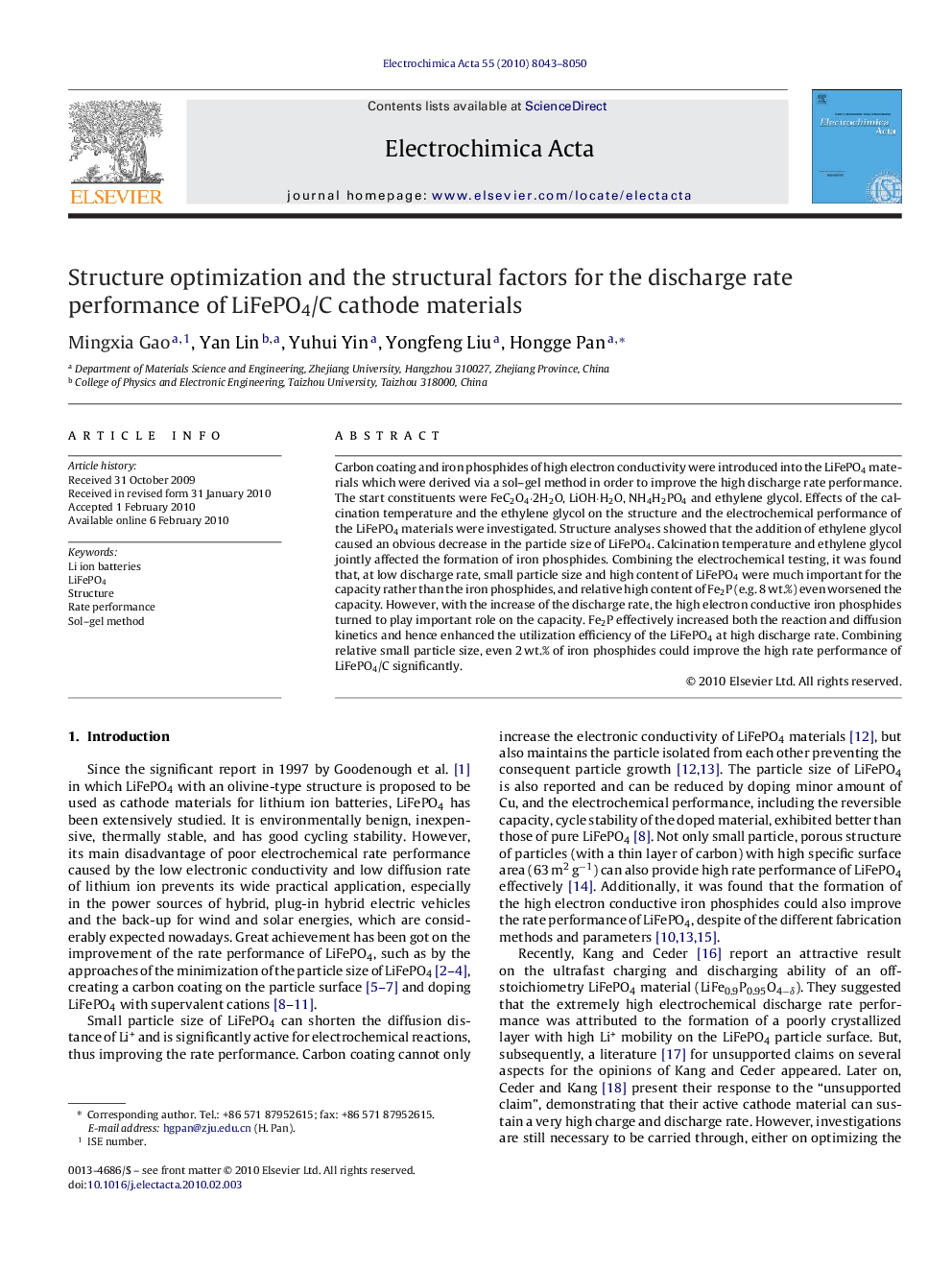| Article ID | Journal | Published Year | Pages | File Type |
|---|---|---|---|---|
| 190416 | Electrochimica Acta | 2010 | 8 Pages |
Carbon coating and iron phosphides of high electron conductivity were introduced into the LiFePO4 materials which were derived via a sol–gel method in order to improve the high discharge rate performance. The start constituents were FeC2O4·2H2O, LiOH·H2O, NH4H2PO4 and ethylene glycol. Effects of the calcination temperature and the ethylene glycol on the structure and the electrochemical performance of the LiFePO4 materials were investigated. Structure analyses showed that the addition of ethylene glycol caused an obvious decrease in the particle size of LiFePO4. Calcination temperature and ethylene glycol jointly affected the formation of iron phosphides. Combining the electrochemical testing, it was found that, at low discharge rate, small particle size and high content of LiFePO4 were much important for the capacity rather than the iron phosphides, and relative high content of Fe2P (e.g. 8 wt.%) even worsened the capacity. However, with the increase of the discharge rate, the high electron conductive iron phosphides turned to play important role on the capacity. Fe2P effectively increased both the reaction and diffusion kinetics and hence enhanced the utilization efficiency of the LiFePO4 at high discharge rate. Combining relative small particle size, even 2 wt.% of iron phosphides could improve the high rate performance of LiFePO4/C significantly.
